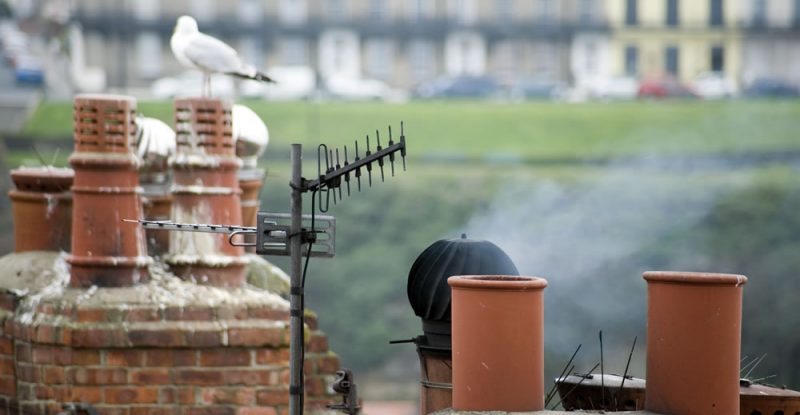I live in a cottage built around 1900 with rendered brick walls (render possibly original) and a slate roof. After the heavy rains of winter 2013-14 there was water ingress around the two chimney stacks through to the bedroom ceilings.
A roofing company repaired the stacks and treated the render but during the following winter one chimney stack appeared to be waterproof but the other not. I re-called the roofing company who stated that the chimney stacks were sound externally, but the chimney brickwork etc may be “hygroscopic” which might require expert attention. This chimney stack was linked to an open fireplace downstairs used over the years.
Coincidentally we had a multi burner stove installed in January 2014. The stove company recommended and installed Leca insulation, inserting this down one chimney pot before fitting a cowl. The other chimney passage to the bedroom is vented.
The loft space is small but on inspection this chimney stack was quite damp inside the loft after the winter of 2014/15, drying out afterwards. The loft has original airbricks plus three ventilating ridge tiles, fixed at a much later date. Has the fitting of the woodburner contributed to what may be condensation ? What are your suggested solutions please ?
What Jeff says…
The brickwork forming the flues in old houses will be impregnated with salts given off by decades of coal and wood smoke. These salts make the brickwork hygroscopic, meaning that it can absorb moisture directly from the air. This is not the same thing as condensation.
For a common example of hygroscopicity, think of a salt cellar on the table of a steamy café in winter – sometimes you can see individual grains of salt around the spout forming into little pools of water. Or – if you don’t frequent greasy spoon cafés as I do – have a look at the salt sprinkled on the roads during dry but icy weather – you will see each grain of salt sitting in its own little damp patch.
For this reason it is important to keep disused old flues, chimney breasts and stacks ventilated, allowing a trickle of air to flow up from the room below and out through the pot.
It sounds as though the flue used by your multi-fuel stove has been fitted with a corrugated stainless-steel liner, with Leca insulation granules poured around the outside. This is standard industry practice, and helps the stove to draw when it is first lit. But it does take away that important drying effect.
The chimney breast in the roof space being damp is not in itself damaging, and you say that space is now well ventilated. So the only problem would appear to be the hygroscopic moisture migrating to the adjacent bedroom ceiling, which I’m guessing is probably modern gypsum plasterboard – a material which itself is hygroscopic. You can prevent this migration by cutting a physical gap between the chimney breast and the ceiling, and hiding it with acrylic mastic or a timber moulding.
Do you have a question for Jeff? Ask one here

